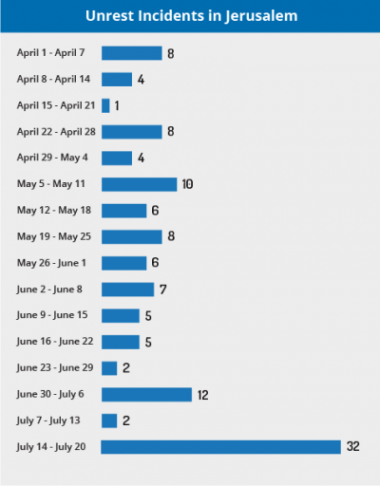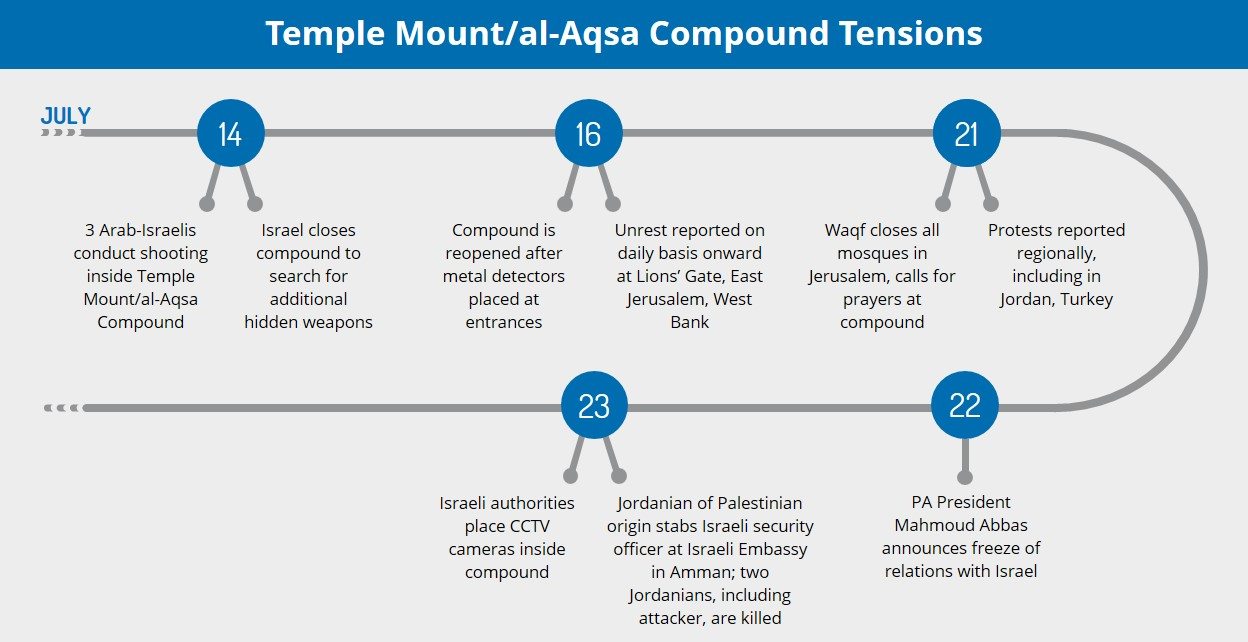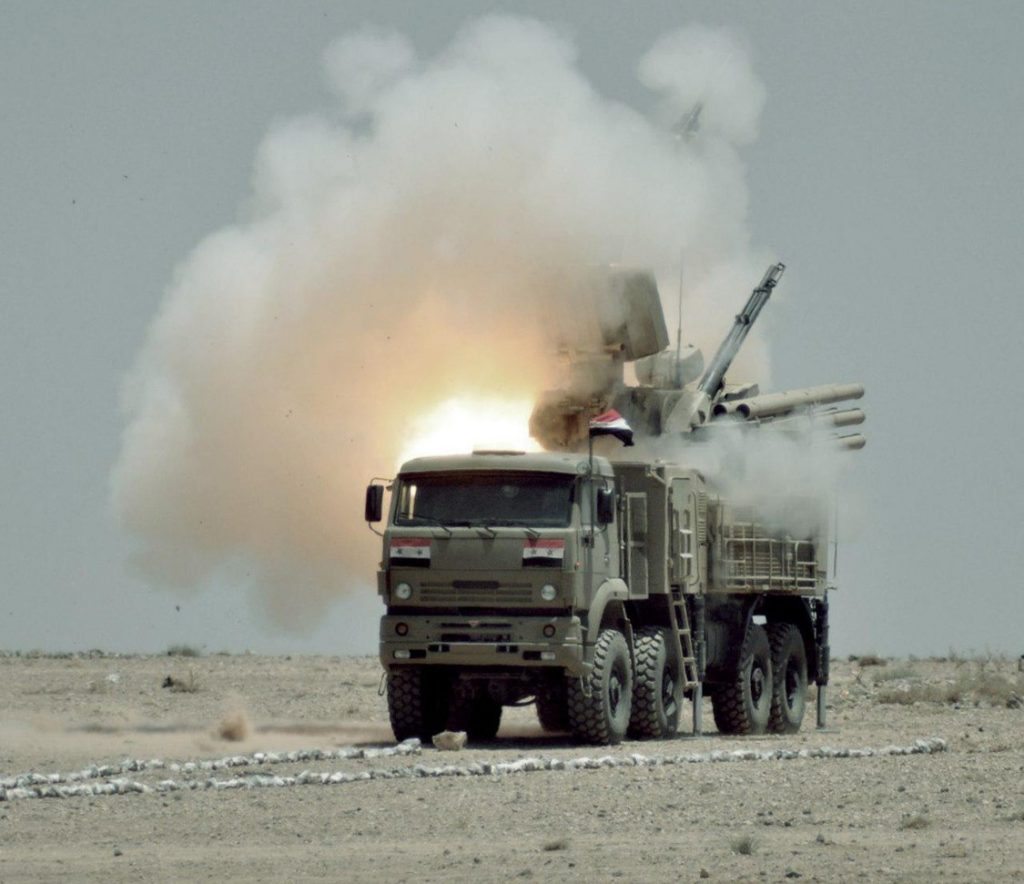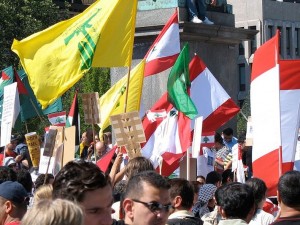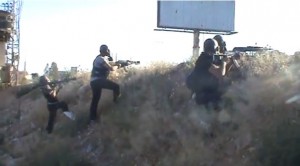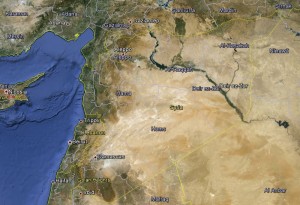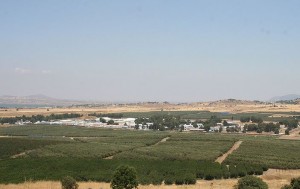Current Situation
On October 12, Fatah and Hamas signed a reconciliation deal in Cairo. According to the agreement, Hamas will hand over all Gaza government institutions to the Fatah-led Palestinian Authority (PA) by December 1. PA security forces will take control of the border crossing with Egypt, with certain sources indicating that this handover will be completed by November 1. The parties reportedly agreed to prepare for national elections and are scheduled to meet again in Cairo on November 21 to negotiate further issues.
Previously, Hamas agreed on September 16 to dissolve its government in Gaza and reconcile with the Fatah-led Palestinian Authority (PA). The group also reportedly agreed at that time to hold general elections. Lastly, multiple Arab and Muslim countries welcomed the reconciliation agreement between the two parties, including Saudi Arabia’s Foreign Ministry on October 13.
 Assessments & Forecast
Assessments & Forecast
Reconciliation agreement liable to improve Hamas’ status vis-a-vis region’s Arab countries; PA likely to gain foothold in Gaza Strip, possibly increasing its image among Palestinians
While in light of the failure of past reconciliations between the two parties it cannot be ruled out that the agreement will not materialize, given that the agreement serves the interests of both parties, it will likely manifest and be kept by Hamas and Fatah in the short- to medium-term. The reconciliation agreement between the two parties is likely part of the Hamas’s efforts to bolster its regional and international legitimacy. While the Fatah-led Palestinian Authority (PA) is widely accepted within the international community, Hamas is designated as a terrorist organization among many Western countries. Furthermore, Hamas has traditionally been resented by the prominent Arab countries, chiefly due to its rivalry with the PA, which is broadly supported across the region.
Through reconciling with the PA, Hamas likely attempts to improve its relations with the Arab countries. This is highlighted by the Egyptian-mediated negotiations between the two entities, as well as the Hamas’ growing cooperation with the Egyptian security establishment regarding the threat of militancy in North Sinai in recent months. By improving relations with Egypt, a prominent actor that maintains close ties with Saudi Arabia, Hamas will likely bolster its relations with the Kingdom and other Arab countries. This is further strengthened by Saudi Arabia’s recent welcoming of the reconciliation agreement between Fatah and Hamas. Additionally, Hamas also demonstrated this effort in its new charter, which distanced the Hamas from the Muslim Brotherhood, a banned group in many countries.
In the Gaza Strip, the agreement is likely a part of Hamas’ efforts to reverse the PA-instated sanctions in recent months, including halting power supply to the Gaza Strip, as well as withholding the salaries of thousands of Gaza-based civil servants. Should relations between Hamas and some of the Arab countries eventually improve, investments and donations may recover the Gaza Strip’s economy. In addition, the frequent opening of the Rafah border crossing may relieve pressure on the group in the Gaza Strip, coupled with the rapprochement between Hamas and the al-Sisi administration in Egypt. Such economic improvements in the Gaza Strip may allow Hamas’ local reputation to improve. However, should the economic improvement be perceived by Gaza’s population as linked to the PA’s efforts, it is possible that support for the PA among the Gaza Strip’s residents will increase, thus shifting the political environment towards the PA.
In the West Bank, the agreement is likely part of Hamas’ attempts to increase its foothold. In this context, if elections eventually take place, Hamas will likely achieve significant gains, capitalizing on growing anti-PA sentiments across the West Bank. Multiple polls conducted among the Palestinians over the past several years have predicted Hamas’ victory in the event of elections. According to an opinion poll from September 20, if presidential elections take place, the chief of Hamas’ Political Bureau Ismail Haniyeh would win the elections with 49.8 percent, while the current PA president Mahmoud Abbas would achieve only 41.7 percent. With this in mind, the PA will likely seek to postpone such a scenario as much as possible to prevent the reduction of its power in the West Bank.
For the Fatah-led PA, the agreement may serve its interests by granting PA security forces a degree of control in the Gaza Strip, including of its border crossings and local administration. Given the PA’s declining status among Palestinians, the reconciliation may allow the body to portray itself as siding with the “resistance” and rebuild its reputation. In addition, the development may be aimed at putting pressure on Israel, given the current lack of negotiations and low likelihood of such talks at this time. By forming a unity government, the PA likely seeks to counter one of Israel’s main arguments against the commencement of negotiations, namely the lack of one government representing the Palestinians. This would allow the PA to portray Israel as unwilling to negotiate a solution to the Israeli-Palestinian conflict.
Reconciliation liable to enhance Egypt and Saudi-led Arab countries’ influence in Gaza, while countering Iran’s
Iran will likely oppose this newly achieved agreement, given that it compromises its interests in the region by reducing the threat of militancy to Israel, as well as strengthens elements allied with its regional rival Saudi Arabia. Tehran is liable to attempt to thwart the materialization of the agreement, mainly by bolstering its support for factions within Hamas who are known for their traditional links to Iran, such as the group’s military wing, Izz ad-Din al-Qassam Brigades. This party, in turn, is likely to oppose the agreement given the influence it would allow other Arab countries at Iran’s expense, and more hawkish factions within the military wing may seek to thwart the agreement over the coming weeks, including by attempting to overthrow the current Hamas leadership in Gaza, as well as to escalate tensions with Israel into a broad conflict.
For Egypt, the reconciliation agreement serves Cairo’s interest in mitigating the risk of militancy in the North Sinai Governorate. Over the past several months, Egypt has invested efforts to destroy militant infrastructure in Rafah city along the border between Egypt and the Gaza Strip, mainly to prevent the Islamic State (IS)-affiliated group Wilayat Sinai from smuggling weapons and fighters from Gaza into northern Sinai. Having pro-Egyptian security personnel along the border on the Gazan side, particularly PA-linked security forces, will enable cooperation with their Egyptian counterparts, subsequently reduce the threat emanating from such jihadist elements. Even in the event of Hamas security forces’ positioning along the border, in light of the ongoing rapprochement between Cairo and the faction in recent months, the Egyptian government’s interests are liable to be preserved nonetheless.
The agreement also serves Saudi Arabia and its Arab allies’ interests. The Hamas-controlled Gaza Strip had been under Iranian influence, exemplified by efforts to arm Hamas’ military wing Izz ad-Din al-Qassam Brigades. By securing the presence of friendly elements within the Gaza Strip, namely PA officials, Riyadh would be able to gain a certain foothold in Gaza and potentially counter Iran’s influence. This could also be achieved by future investments by Saudi Arabia, as well as other Gulf Cooperation Countries (GCC), in the Gaza Strip. In addition, an agreement between the Saudi-backed Fatah-led PA and the Qatari-backed Hamas could possibly serve as a trigger for negotiations to solve the crisis between Qatar and the other GCC countries, as a cooperation may be required by Doha and Riyadh to oversight the agreement.
Likelihood for negotiations between Israel and Palestinians remains low, despite decreased potential for future broad conflict between Israel, Gaza-based militants
FORECAST: Given Hamas’ refusal to disarm its military wing, as well as Israel’s interest in avoiding acknowledging Hamas as representatives of the Palestinians, peace negotiations are unlikely to commence at this time. However, given precedent of previous such reconciliation agreements, the ongoing security cooperation between Israel’s security apparatus and PA security forces will likely continue over the coming weeks and months, including in the form of arrests of Hamas militants.
The agreement will likely reduce the potential for large-scale hostilities between Israel and Gaza-based militants. This is due to the expected improvement of economic conditions as a result of such an agreement. This includes salary payments to Gaza-based civil servants, particularly Hamas’ military wing’s operatives, which would diminish the group’s motivation to ignite hostilities. In the event of a localized escalation, in light of Egypt’s increasing rapprochement and growing influence on Hamas, Cairo would likely serve as a mediator between Israel and Hamas, thus reducing the potential for an exacerbation of hostilities. Nevertheless, Gaza-based Salafist and Islamic State (IS)-inspired militant groups will likely continue to target Israel with occasional rocket fire over the coming weeks and months in an attempt to drag Hamas and Israel into a broad conflict, with the long-term goal of weakening Hamas’ control over the Gaza Strip. Such elements may also carry out acts of militancy against PA elements and Hamas-affiliated interests, destabilizing the security conditions in the Gaza Strip, which in turn would serve as a fertile ground for the recruitment of new militants.
Recommendations
Business-essential travel to Ramallah can continue at this time while adhering to basic security precautions regarding the threats of civil unrest and militancy. Consult with us for itinerary-based recommendations and ground support options. Avoid nonessential travel to other Palestinian-controlled areas of the West Bank at this time given the persistent threat of civil unrest.
We advise against all travel to the Gaza Strip at this time due to continuous border crossing closures and the threat of militant activity. If travel is essential, prior to entering Palestinian-controlled areas from Jerusalem-area checkpoints, confirm that crossings remain open and no unrest is taking place. Crossings near the cities of Jenin, Qalqilya, and Tul Karem remain less prone to violence. Minimize night travel in major cities, as the majority of IDF and PA security operations occur at this time, particularly in the vicinities of Palestinian refugee camps.

